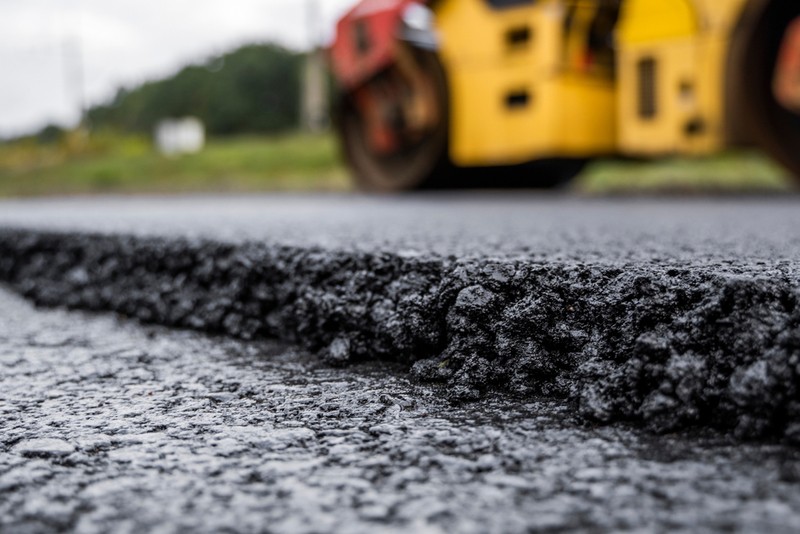Resilient Outcomes: Asphalt Spot Repair Through Precision Sealing
Resilient Outcomes: Asphalt Spot Repair Through Precision Sealing
Blog Article
Cold Mix Asphalt Vs. Hot Mix Asphalt: Which Is Right for You?

Make-up Differences
Cold mix and hot mix asphalts vary considerably in their structure, with distinctive attributes that affect their efficiency and applications. Cold mix asphalt is produced by emulsifying the asphalt binder with water and an emulsifying representative prior to blending it with accumulation. This technique enables the asphalt to be workable at reduced temperatures, making it suitable for temporary repair services and for use in cooler climate condition. Warm mix asphalt, on the various other hand, is produced at heats, normally in between 300-350 ° F, which aids to achieve better compaction and a much more sturdy final product. The hot mix asphalt manufacturing procedure involves heating the aggregate and asphalt binder independently before combining them at the asphalt plant.
Furthermore, cold mix asphalt has a tendency to be less dense and extra flexible than warm mix asphalt. This adaptability makes it far better suited for areas with higher levels of movement, such as driveways or roadways with heavy traffic. In contrast, hot mix asphalt is known for its high resilience and resistance to rutting and cracking, making it a preferred choice for freeways and high-traffic roadways where long life is vital.
Installation Process Differences
The process of mounting cold mix and warm mix asphalt exhibits significant variations in their treatments and demands. In comparison, warm mix asphalt requires a more fancy installment process. Due to the heating needs, warm mix asphalt installments are usually lugged out by specialists with specialized devices, making certain a more long-term and structurally audio outcome.
Durability and Longevity Variables
When taking into consideration asphalt alternatives, toughness and long life are important variables to review for long-term pavement performance. Warm mix asphalt (HMA) is known for its phenomenal toughness and durability.
In terms of long life, HMA typically outmatches CMA due to its remarkable strength and resistance residential or commercial properties. HMA sidewalks have a longer life span, needing less regular fixings and upkeep, which can convert continue reading this to cost savings over time. In addition, HMA sidewalks are more quickly customizable to satisfy details task requirements, further boosting their sturdiness.
Expense Considerations
Taking into consideration the financial ramifications is an essential element when assessing the selection between warm mix asphalt (HMA) and cool mix asphalt (CMA) for pavement jobs. While the first price of warm mix asphalt is usually higher than that of cool mix asphalt, HMA often offers an extra cost-effective remedy in the lengthy run due to its premium toughness and long life.
In addition to material expenses, it's important to consider the costs associated with installation and upkeep when comparing HMA and CMA. Inevitably, the choice in between HMA and CMA must take right into account not just the preliminary expense yet also the lasting financial ramifications to determine the most cost-efficient option for the specific sidewalk task.
Environmental Effect Contrast
Comparison of the environmental influences between hot mix asphalt (HMA) and chilly mix asphalt (CMA) reveals unique differences in sustainability practices. HMA production requires high temperature levels, leading to boosted power consumption and greenhouse gas exhausts.
Moreover, the usage of CMA commonly involves recycling existing asphalt sidewalk, promoting resource preservation and decreasing the amount of waste sent out to garbage dumps. By opting for CMA over HMA, roadway building and construction jobs can contribute favorably to environmental preservation efforts.
Final Thought
Finally, the option between cool mix asphalt (CMA) and hot mix asphalt (HMA) depends on numerous variables such as composition, setup procedure, toughness, durability, cost, and environmental influence. angle parking. While CMA uses a quick and cost-efficient remedy for minor repair work, HMA makes sure superior toughness and long life for rush hour areas. Think about these variables carefully to identify which kind of asphalt is the right choice for your paving needs

Considering the financial effects is a critical aspect when reviewing the choice between hot mix asphalt (HMA) and cool a knockout post mix asphalt (CMA) for pavement projects. While the preliminary price of warm mix asphalt is usually greater than that of cold mix asphalt, HMA typically gives a more cost-effective option in the lengthy run due to its superior sturdiness and long life. asphalt patch repair.Comparison of the environmental effects cold mix asphalt in between warm mix asphalt (HMA) and cool mix asphalt (CMA) exposes distinctive distinctions in sustainability techniques.In verdict, the choice in between chilly mix asphalt (CMA) and warm mix asphalt (HMA) depends on different aspects such as make-up, installation process, toughness, long life, price, and ecological impact
Report this page